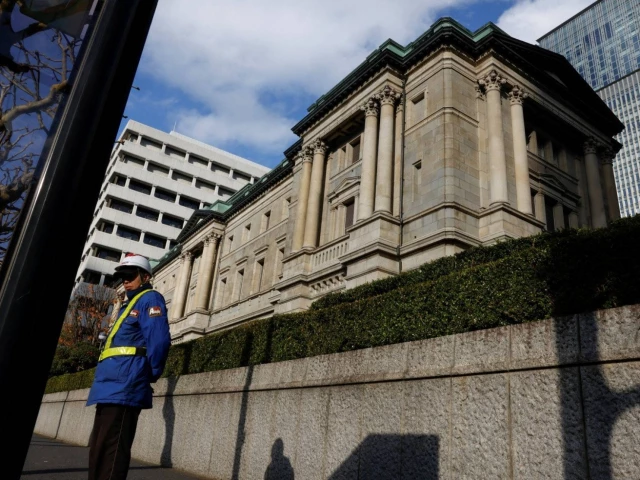Business
Amtrak is launching its faster NextGen Acela with better amenities after years of delays. Here’s what you need to know

Amtrak’s NextGen Acela.
Courtesy: Amtrak
Amtrak rolled out its NextGen Acela trains on Thursday, marking the next phase for the U.S.’s attempt at high-speed rail.
Dubbing itself as “America’s only high-speed rail service,” the new trains will run between Washington, D.C., and Boston, with a top speed of 160 mph. It’s an extension of Amtrak’s existing Acela trains, which run through the busy Northeast corridor and operate at speeds up to 150 mph on certain sections of the route.
According to Amtrak, more than 69 million passengers have traveled on Acela trains since the service began at the end of 2000. In fiscal year 2024, Amtrak said customers rode more than 3 million Acela trips, generating nearly $530 million in ticket revenue.
The new trains, contracted with French manufacturer Alstom, will replace the current Acela equipment. Amtrak said the NextGen Acela trains will accommodate 27% more customers and have enhanced features like free, high-speed Wi-Fi, as well as wider seats, a tilt system that enables a smoother ride and more daily departures.
At its launch, Amtrak said it will begin with five new trains, aiming to deploy all 28 by 2027.
Inside Amtrak’s NextGen Acela train.
Courtesy: Amtrak
“I think America deserves high-speed rail,” Transportation Secretary Sean Duffy said at a Wednesday event with Amtrak in Washington, D.C. “This is, at 160 miles an hour, one great step in that process.”
Like its predecessor, the Acela fleets offer only first class and business class seating. The rail company will operate both the older trains and newer models over the next few months as more of the NextGen trains are added.
“These trains are beautiful, they are fast, they are state-of-the-art, and they are American-made,” Amtrak President Roger Harris said at the Wednesday event. “There has never been a better way to travel by train in America.”
The parts for the new trains were manufactured in 29 states, with 95% produced within the U.S., Amtrak said, adding that the manufacturing generated more than 1,200 new jobs.
As of 2024, Amtrak owned 16 Acela trainsets.
A rocky track record
Amtrak employees walk past the Amtrak NextGen Acela, an all-new high speed train running between Washington, DC, and Boston, prior to the train’s inaugural departure from Union Station in Washington, DC, August 27, 2025.
Saul Loeb | AFP | Getty Images
The new trains are not without struggles. Amtrak originally planned on debuting them in 2022, but faced numerous delays.
In May, Amtrak said it was eliminating 450 roles to save $100 million in annual costs. That came after the White House reportedly forced CEO Stephen Gardner to resign in March as President Donald Trump called for changes. Amtrak has yet to name a new CEO.
The rail company has also lost money for years. In fiscal year 2024, Amtrak reported $3.6 billion in revenue compared with $8.8 billion in capital and operating expenses. It recovered 84% of its operating costs with ticket sales and other revenue, Amtrak added.
The new trains are also significantly slower than their high-speed counterparts in Europe and Asia, with Japanese bullet trains operating at a top speed of 200 mph.
It’s not America’s first attempt at the high-speed rail, either.
California has aimed for more than a decade to build a bullet train that can travel between Los Angeles and San Francisco in under three hours. That vision has since been trimmed, aiming to now connect just a 170-mile stretch of land with questions surrounding its viability.
Last month, Duffy formally terminated all of the California High-Speed Rail Association’s federal funding after a Federal Railroad Administration report determined that the project was unable to complete its goals, and on Tuesday, he pulled an additional $175 million from the project. The state of California has filed to sue the government for what it calls an “illegal” action with the canceled federal funding.
Private rail company Brightline has also attempted the high-speed rail formula in Florida. The company aims to privatize the rail system and has welcomed millions of passengers on its trains, which travel at 125 mph.
But Brightline has had its fair share of financial struggles. The company is facing looming debt and reported a net loss of roughly $549 million in 2024, marking an uncertain road ahead.
Business
HDFC Bank Changes Lounge Access Norms For Debit Cards From January 10– Details Here

New Delhi: If you often use your HDFC Bank debit card for free airport lounge access, this update is important for you. The bank has changed how complimentary lounge entry works on its debit cards. Instead of simply swiping your card at the lounge, customers will now need a digital voucher to get access. Also, the minimum spending requirement has been increased, reported Moneycontrol. These new rules will come into effect from January 10, and will apply to eligible debit cardholders going forward.
How the New Lounge Voucher System Works
Once your eligibility is confirmed, HDFC Bank will send you an SMS or email with a link to claim your lounge access voucher. You’ll need to verify your request by entering an OTP sent to your registered mobile number. You will receive a voucher code or QR code after successful verification which must be shown at the airport lounge to get entry.
Minimum Spend Requirement Increased
Under the revised rules, HDFC Bank debit card users will now need to spend at least Rs 10,000 in a calendar quarter to be eligible for complimentary airport lounge access. Earlier, the minimum spend required was Rs 5,000.
However, this condition will not apply to HDFC Infiniti Debit Card holders. Customers using the Infiniti card will continue to enjoy free lounge access without any minimum spending requirement.
Eligible Transactions and Free Lounge Visits by Card Type
Only purchase transactions made using the debit card will be considered while calculating the quarterly spending requirement. Other types of transactions will not be counted, as noted by Moneycontrol.
Meanwhile, the number of complimentary lounge visits remains unchanged and continues to depend on the debit card variant:
Millennia Debit Card: 1 free visit per quarter
Platinum Debit Card: 2 free visits per quarter
Times Points Debit Card: 1 free visit per quarter
Business Debit Card: 2 free visits per quarter
GIGA Debit Card: 1 free visit per quarter
Infiniti Debit Card: 4 free visits per quarter
This means cardholders should check both their spending eligibility and card type to know how many lounge visits they can enjoy.
Which Transactions Count and Voucher Validity Explained
Only purchase transactions made using the debit card will be counted towards the quarterly spending requirement. As per Moneycontrol, the following transactions will not be included:
ATM cash withdrawals
UPI or wallet payments (GPay, PhonePe, Paytm, etc.)
Credit card bill payments made via debit card
Debit card EMI transactions
New debit cardholders will also need to meet the Rs 10,000 spending requirement to become eligible for complimentary lounge access.
Voucher Validity:
Once issued, the lounge access voucher will remain valid till the end of the next calendar quarter, after which it will expire if not used.
What This Means for Debit Card Users
With the updated lounge access rules, HDFC Bank is clearly encouraging higher card usage and digital verification. Customers who regularly use complimentary lounge benefits will now need to keep a close watch on their quarterly spending and complete the voucher process in advance. As per Moneycontrol, physical debit card swipes will no longer work from January 10, making it important for travellers to switch to the new digital voucher system.
Business
India-US trade: Exports rebound in November; supply-chain shifts and holiday restocking drive recovery, says GTRI – The Times of India

India’s exports to the US bounced back in November after two months of dip. The rebound was largely supported by supply-chain adjustments and pre-holiday season inventory restocking, according to the Global Trade Research Initiative (GTRI). This recovery came despite the US imposing 50 per cent tariffs on Indian goods since August.
November India-US trade snapshot amid higher tariffs
- Exports to the US rose 22.61 per cent in November to $6.98 billion, reversing declines seen between May and September.
- Smartphones (largest export item): Exports fell from $2.29 billion in May to $884.6 million in September, before rising to $1.8 billion.
- Gems and jewellery: Slumped from $500.2 million in May to $202.8 million in September, then rebounded to $406.2 million.
- Machinery and mechanical appliances: Declined to $516.8 million in September, before nearly returning to peak levels at $614.6 million in November.
- Pharmaceuticals: Shipments rose to $669.2 million in November, but remained below May levels.
- Mineral fuels and oils (tariff-exempt): Fell from $291.5 million in May to $251.5 million in September, before climbing to $274.3 million.
GTRI said the rebound came after a sharp fall in exports earlier in the year, triggered by uncertainty surrounding impending tariff hikes. GTRI Founder Ajay Srivastava said US buyers initially delayed orders and ran down inventories. “Once the higher tariffs became certain, exporters and US buyers began adjusting, absorbing part of the cost, renegotiating prices, and shifting toward less-affected or hard-to-substitute products,” he said.However, the think tank also warned that this recovery might not last. They claimed that it was more about adjusting to tougher tariffs rather than a permanent improvement. The think tank also added that businesses were using short-term strategies to cope with the new trade environment.
Business
Charity welcomes living wage rise in January

A social action charity has welcomed the decision to increase the living wage in Jersey to £15.10 per hour in 2026.
The new rate was approved this week and will come into effect at the beginning of January.
The living wage is £1.51 higher than Jersey’s minimum wage which is set to increase to £13.59 per hour from April 2026.
Caritas Jersey CEO, Patrick Lynch, said the living wage was the minimum islanders needed “in order to thrive, and not just survive here in Jersey”.
Mr Lynch said: “This will be good news for many at accredited organisations and their subcontractors, ahead of the new year, when many people will have increased rental costs and also face increases in the cost of some utilities and other day to day expenses.
“The Jersey Living Wage has never been as important as it is now for so many people with poverty unfortunately still increasing and a continued rise in food bank usage in our island.
“Putting that in perspective, in February 2022 one food bank was seeing 195 families; that figure has now risen to over 640 families.
“The majority of the people who form this increase are people in work, on minimum or low wages.”
He added the differential between the minimum wage and the Jersey Living Wage “remained worryingly high” and something “Assembly members should ponder as they debate the budget this week and look ahead to next June’s general election”.
-

 Business1 week ago
Business1 week agoHitting The ‘High Notes’ In Ties: Nepal Set To Lift Ban On Indian Bills Above ₹100
-

 Business6 days ago
Business6 days agoStudying Abroad Is Costly, But Not Impossible: Experts On Smarter Financial Planning
-

 Business6 days ago
Business6 days agoKSE-100 index gains 876 points amid cut in policy rate | The Express Tribune
-

 Sports6 days ago
Sports6 days agoJets defensive lineman rips NFL officials after ejection vs Jaguars
-

 Tech1 week ago
Tech1 week agoFor the First Time, AI Analyzes Language as Well as a Human Expert
-

 Business4 days ago
Business4 days agoBP names new boss as current CEO leaves after less than two years
-

 Entertainment6 days ago
Entertainment6 days agoPrince Harry, Meghan Markle’s 2025 Christmas card: A shift in strategy
-

 Tech4 days ago
Tech4 days agoT-Mobile Business Internet and Phone Deals













